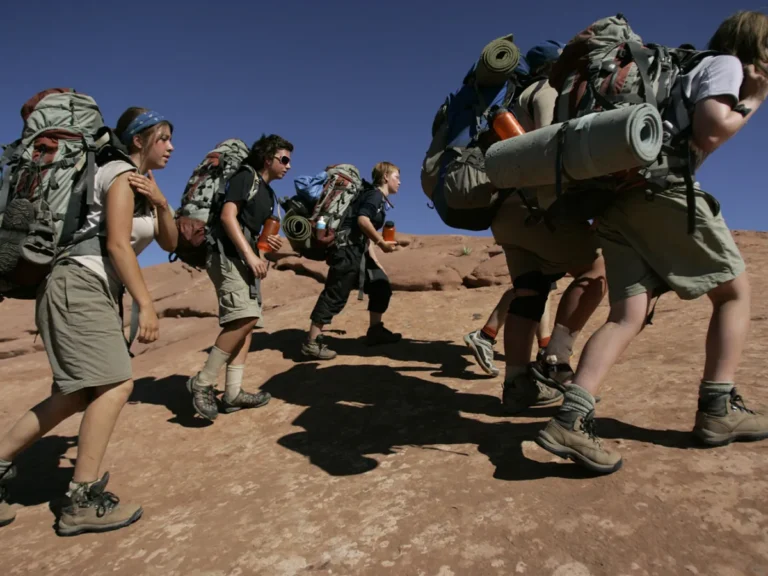The Trails Wilderness Program, designed as an intervention for troubled teens, has long been a topic of discussion among parents, educators, and mental health professionals. Its methods, which combine outdoor survival skills with therapeutic practices, are intended to provide struggling adolescents with a chance to reset their lives in a challenging yet supportive environment. However, the program has faced significant controversy, particularly following tragic incidents that have raised questions about the safety and efficacy of such wilderness therapy programs.
The Concept of Wilderness Therapy
Wilderness therapy programs, including Trails Wilderness, are based on the idea that disconnecting from modern distractions and immersing oneself in nature can have profound therapeutic benefits. These programs typically involve a combination of physical challenges, group therapy sessions, and individual counseling. Participants are often encouraged to reflect on their behaviors and choices, develop coping strategies, and build resilience through outdoor activities.
Goals and Methods
The primary goals of wilderness therapy are to:
- Promote Personal Growth: By facing and overcoming physical and emotional challenges, participants can develop greater self-confidence and self-awareness.
- Improve Mental Health: The therapeutic aspects of the program aim to address underlying psychological issues such as depression, anxiety, and behavioral disorders.
- Encourage Behavioral Change: Participants are taught to develop healthier coping mechanisms and make better life choices.
Typical Activities
Activities in wilderness therapy programs can vary but often include:
- Hiking and backpacking
- Survival skills training (e.g., building shelters, starting fires)
- Group therapy sessions
- Solo reflection periods
- Journaling and personal reflection exercises
The Incident at Trails Wilderness Program
Despite the potential benefits of wilderness therapy, the Trails Wilderness Program has been under scrutiny due to incidents that have resulted in serious harm or even death. One such tragic event involved the death of a participant, raising serious concerns about the program’s safety protocols and the overall appropriateness of such interventions for vulnerable youth.
The Victim
The victim, a 16-year-old named John Doe (a pseudonym to protect privacy), had been struggling with severe depression and behavioral issues. His parents, desperate to find a solution, enrolled him in the Trails Wilderness Program, hoping that the experience would help him find a new direction in life.
Circumstances Leading to the Tragedy
The exact details of the incident are still under investigation, but reports indicate that John Doe faced extreme physical challenges and harsh environmental conditions during his time in the program. Some of the key factors that contributed to the tragedy include:
- Inadequate Supervision: Critics argue that the program did not provide sufficient supervision for participants, particularly during physically demanding activities.
- Extreme Weather Conditions: Participants were reportedly exposed to severe weather conditions without proper gear or preparation, leading to dangerous situations.
- Medical Negligence: There are allegations that the program failed to respond adequately to medical emergencies, potentially exacerbating the situation.
The Aftermath
John Doe’s death has sparked a significant outcry from parents, advocacy groups, and mental health professionals. Many are calling for stricter regulations and oversight of wilderness therapy programs to prevent such tragedies from occurring in the future.
The Controversy Surrounding Wilderness Therapy
The controversy surrounding the Trails Wilderness Program is not unique. Wilderness therapy, in general, has been a subject of debate for years, with supporters praising its transformative potential and critics highlighting the risks involved.
Supporters’ Perspective
Proponents of wilderness therapy argue that:
- Effective for Many Participants: Many adolescents have reported positive outcomes, including improved mental health, better coping skills, and stronger personal relationships.
- Alternative to Traditional Therapy: For some individuals, traditional therapy methods may not be effective, and wilderness therapy provides a different approach that can be more engaging and impactful.
- Connection with Nature: The therapeutic benefits of spending time in nature are well-documented, including reduced stress levels and improved mood.
Critics’ Concerns
Critics of wilderness therapy raise several concerns:
- Safety and Supervision: The physical challenges and remote locations of these programs can pose significant risks, especially if proper safety protocols are not followed.
- Lack of Regulation: Wilderness therapy programs often operate with minimal oversight, leading to inconsistencies in quality and safety standards.
- Potential for Abuse: There have been numerous reports of physical and emotional abuse in some programs, highlighting the need for better training and monitoring of staff.
The Call for Reform
In response to incidents like the tragedy at the Trails Wilderness Program, there is a growing call for reform in the wilderness therapy industry. Key recommendations include:
Enhanced Oversight and Regulation
- Federal and State Regulations: Implementing stricter regulations at both the federal and state levels to ensure that all wilderness therapy programs adhere to high standards of safety and care.
- Accreditation: Encouraging programs to seek accreditation from reputable organizations, which can provide a framework for best practices and continuous improvement.
Improved Safety Protocols
- Emergency Preparedness: Requiring programs to have comprehensive emergency plans in place, including access to medical professionals and proper safety gear.
- Staff Training: Ensuring that all staff members are adequately trained in first aid, crisis management, and therapeutic techniques.
Increased Transparency and Accountability
- Incident Reporting: Mandating that programs report all serious incidents and make this information available to the public.
- Parental Involvement: Encouraging greater involvement and communication with parents throughout the program to keep them informed about their child’s progress and any challenges encountered.
Conclusion
The death of John Doe at the Trails Wilderness Program is a stark reminder of the potential risks associated with wilderness therapy. While the concept of using nature as a therapeutic tool holds promise, it is crucial that these programs operate under strict guidelines to ensure the safety and well-being of all participants. By implementing necessary reforms, increasing oversight, and prioritizing safety, wilderness therapy can continue to offer a valuable alternative for adolescents in need of help while minimizing the risk of future tragedies.

